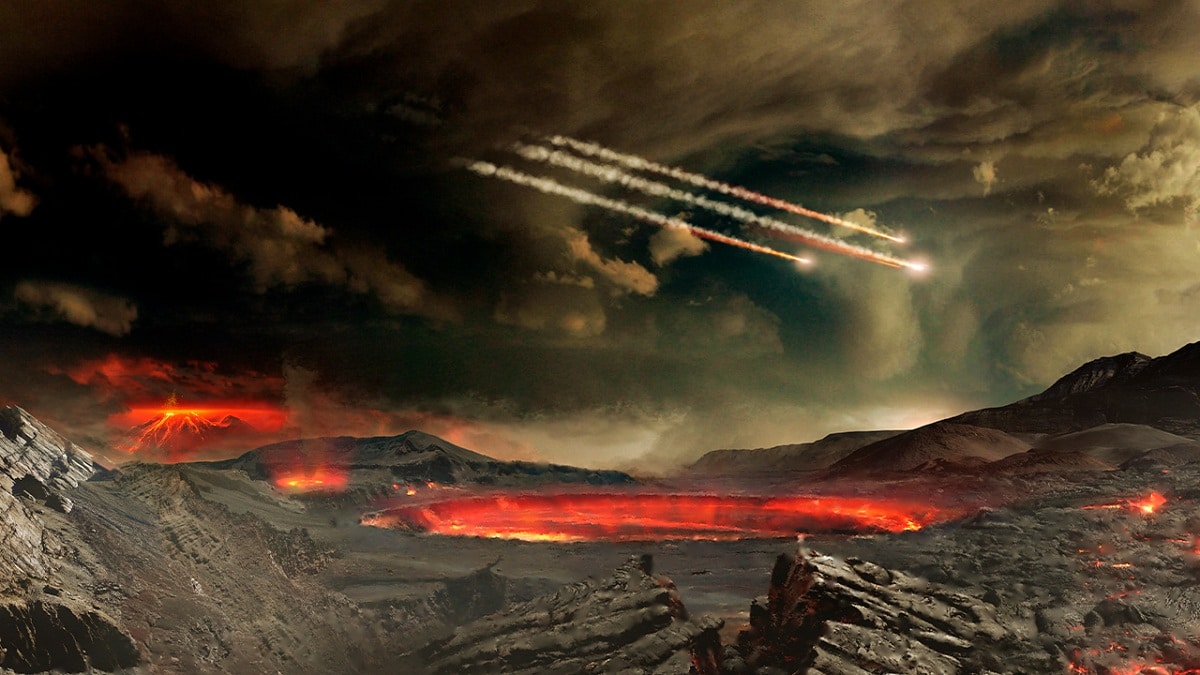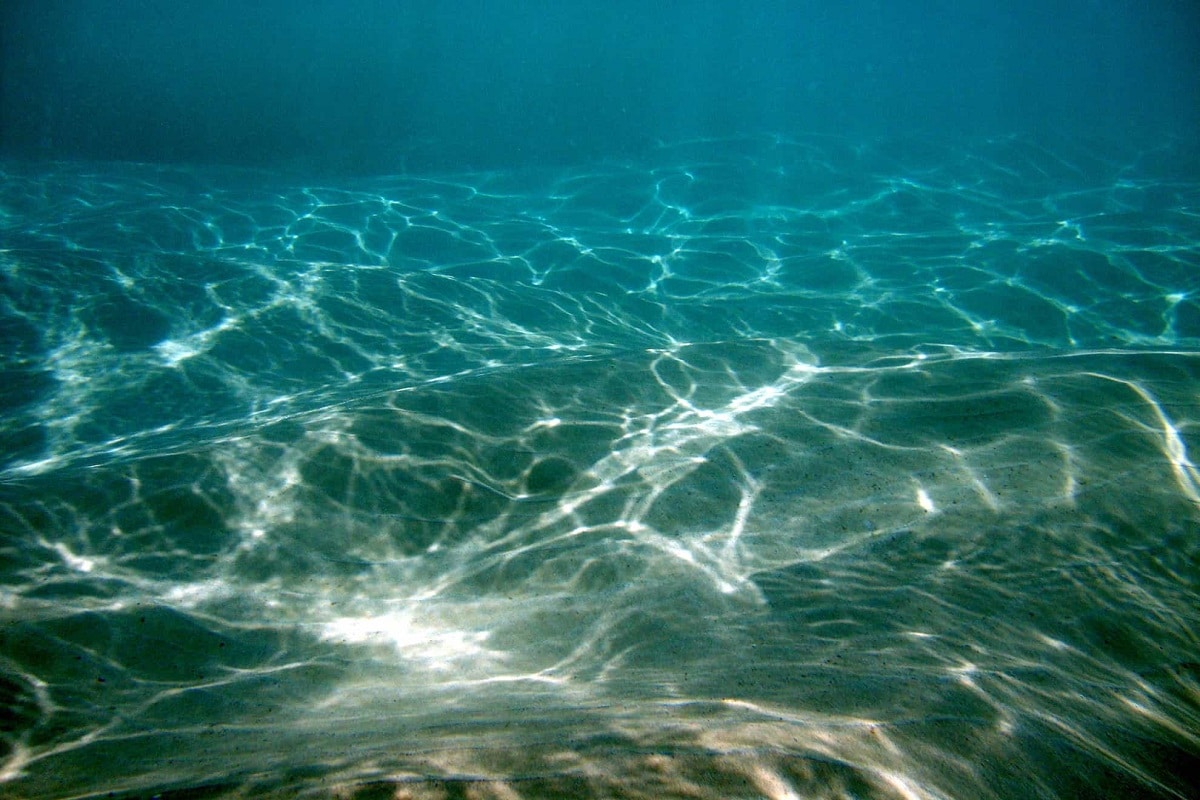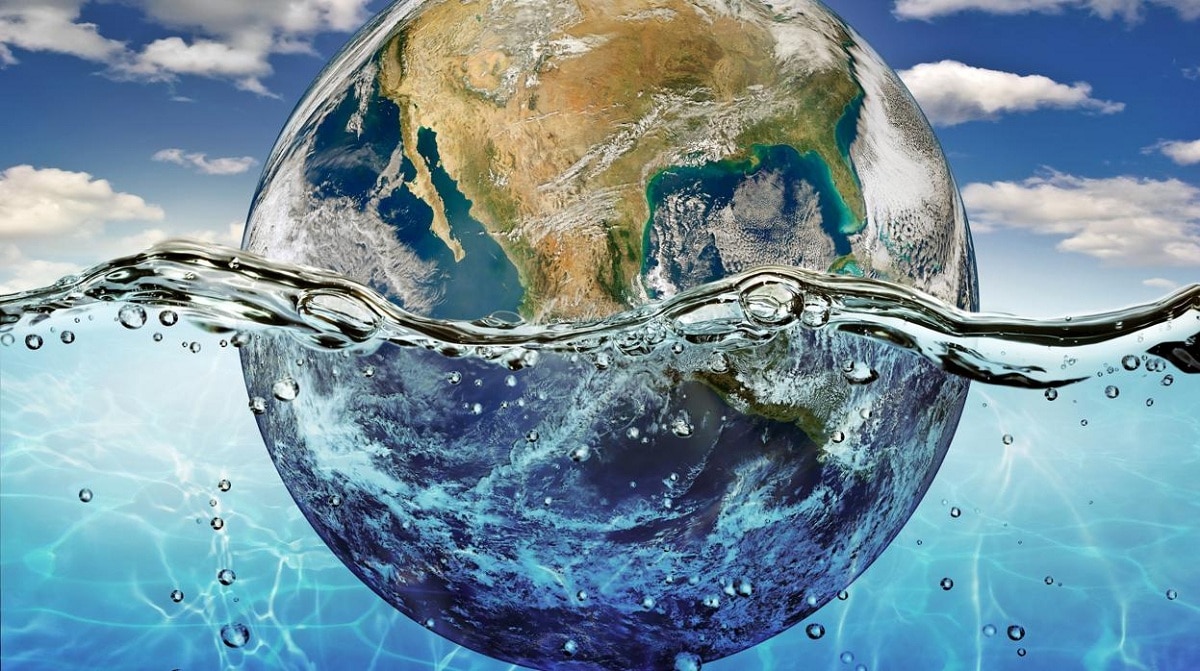
Throughout history they have wondered how the oceans were formed. In the early XNUMXth century, the Earth and other planets were believed to be made of material plucked from the sun. The image of the earth is glowing to hot and then gradually cooling. Once it cooled enough for the water to condense, the water vapor in Earth's hot atmosphere turned to liquid and it began to rain heavily. After years of this incredible rain of boiling water, bouncing and roaring as it hits the hot ground, basins in the Earth's rough surface finally cooled enough to hold water, filling and thus forming oceans.
Was this really how the oceans were formed? In this article we explain it in detail.
how the oceans were formed

Today, scientists are convinced that the Earth and other planets did not form from the sun, but from particles that came together around the same time the sun developed. The Earth never reached the temperature of the sun, but it got quite hot due to the collision energy of all the particles that made it up. So much so that its relatively small mass was initially unable to contain the atmosphere or water vapor.
Or similarly, the solids of this newly formed Earth have neither an atmosphere nor an ocean. Where do they come from?
Of course, the water (and gas) is loosely bound to the rocky material that makes up the solid part of the planet. The interior gets hotter and hotter as the solid part gets tighter under the force of gravity. The gas and water vapor are expelled from their previous association with the rock and leave the solid matter behind.
The bubbles that formed and accumulated wreaked havoc on the young Earth, while the heat released caused violent volcanic eruptions. Not a single drop of liquid water has fallen from the sky for many years. It's more like water vapor, sizzling up from the crust and then condensing. Oceans form from above, not from below.
What geologists don't agree on today is the rate at which oceans form. Did all the water vapor disappear in about a billion years for the oceans to be the size they are today since life began? Or is it a slow process in which the ocean has been growing and continues to grow throughout geological time?
raining in the sea

Those who think that the oceans formed early in the game and have remained constant in size ever since point out that the continents appear to be a permanent feature of the Earth. In the past, when oceans were thought to be much smaller, they didn't seem to be much bigger.
On the other hand, those who believe that the ocean has been steadily rising point out that volcanic eruptions still spew large amounts of water vapor into the air: the water vapor comes from deep rocks, not the ocean. Additionally, there are seamounts in the Pacific Ocean whose flat tops may have been at sea level but are now hundreds of meters below sea level.
Perhaps a compromise can be reached. It has been suggested that while the oceans are rising, the weight of standing water is causing the seabed to collapse. That is, according to this hypothesis, the ocean has been getting deeper, but not wider. This could explain the existence of these submerged oceanic plateaus, as well as the existence of continents.
Tectonic plates

The formation of oceans on Earth is an indirect result of convective processes in the mantle breaking up the crust. It all starts with the pressure that the magma exerts on the surface. This pressure causes first the weakening of the earth's crust and then its rupture. Although the pressure exerted by the magma has an approximately vertical orientation, from the axis of maximum pressure of the magma a horizontal force is generated that breaks the crust. As a result, extensive cracks are formed that expand over time.
As the crustal masses slowly pull apart, the surface gradually sinks and large depressions form (due to pull apart stresses). Volcanic activity occurs in these depressions (where magma already has the potential to escape), and over time as the depressions increase in width, they fill with water, eventually forming large bodies of water as we know them. Like the sea and the ocean. When a volcano is covered, it becomes the bottom of the ocean, and the volcanic ridges along the fissures are called mid-ocean ridges. A rift is a large area of opening, separation, cracking, and fissures in the earth's crust.
Some mysteries of how the oceans were formed
The hypothesis that distant meteorites and comets are filled with water requires complex processes of gravitational influence between the giant planets and these celestial bodies to bring them here from their distant orbits. Laurette Piani and a team from the National Center for Scientific Research (CNRS, French acronym) and the University of Lorraine (France) they tried to demonstrate another proposed possibility to explain why it is the blue planet.
The Earth was made of a mixture of material from the nebula that gave rise to the solar system. "Today we know that the terrestrial planets, including Earth, did not form suddenly, but were assembled from hundreds of celestial bodies," explained Josep Maria Terri, principal investigator of the Small Objects and Meteorites Group at the Go Space Sciences Institute. . CSIC).-IEEC), in Barcelona. "Earth-forming objects will form much closer to the sun, and 80 to 90 percent will be enstatite chondrites [whose most abundant minerals] or common," he added.
I hope that with this information you can learn more about how the oceans were formed.
Every day I am awaiting the delivery to my mail of this interesting knowledge related to our beautiful Blue Planet that we must keep healthy for the next generations... An effusive greeting.